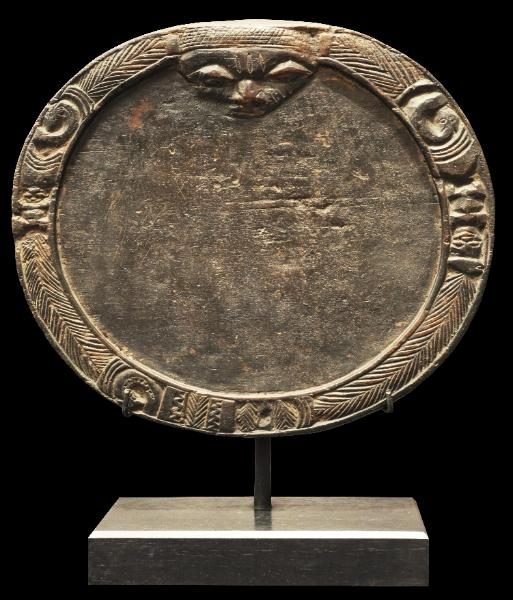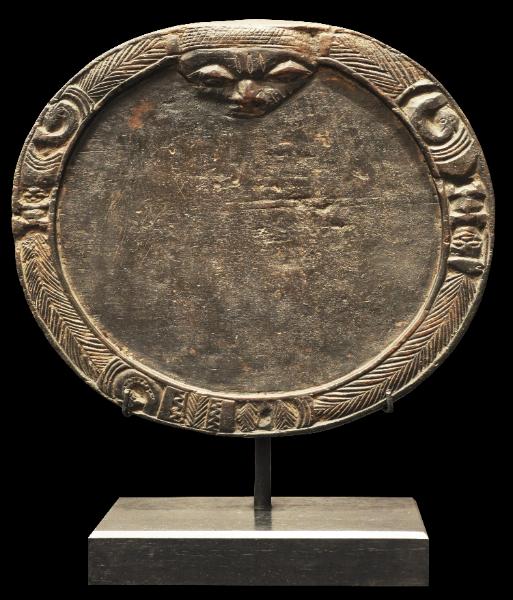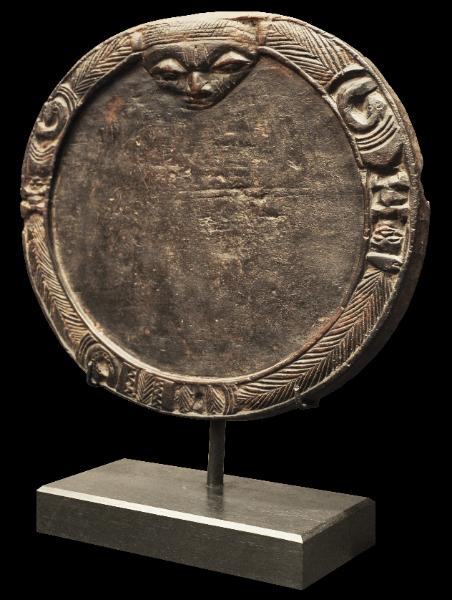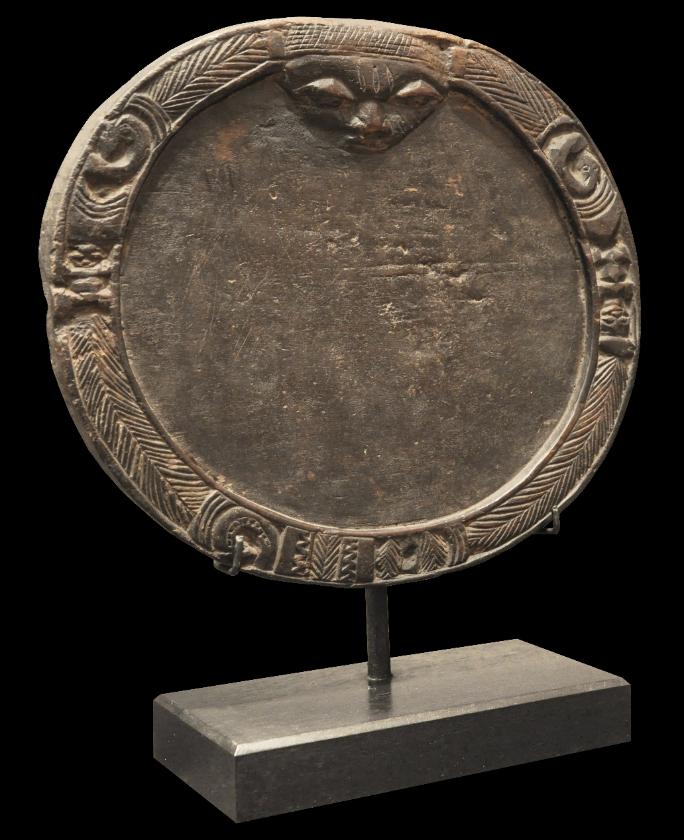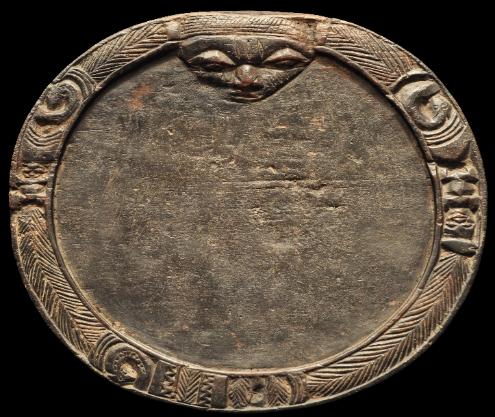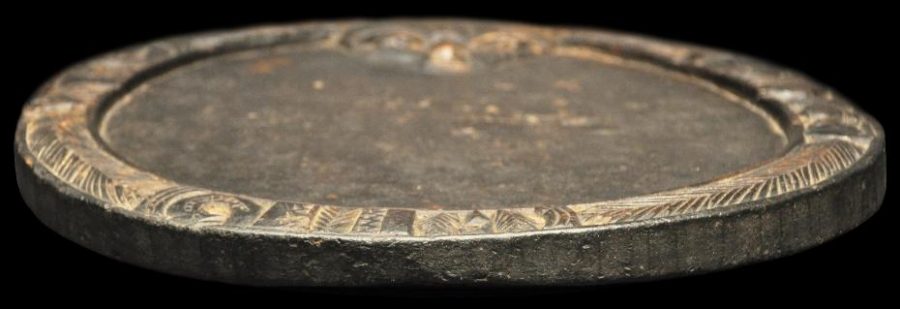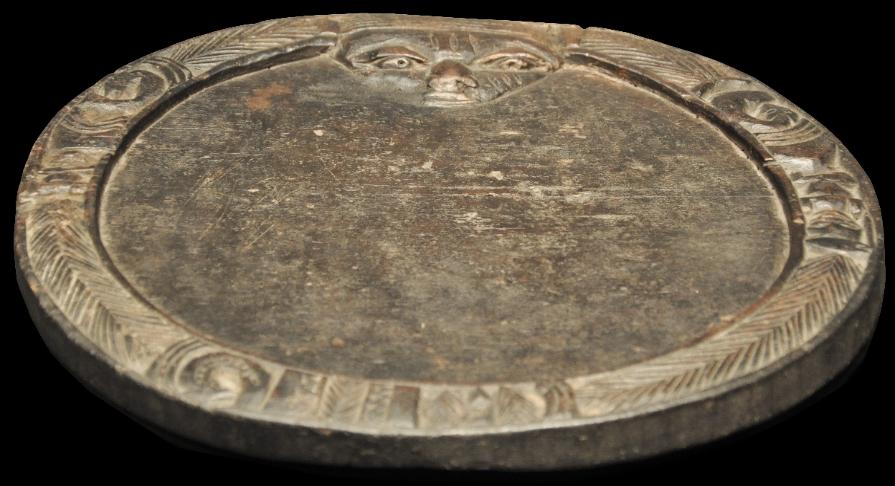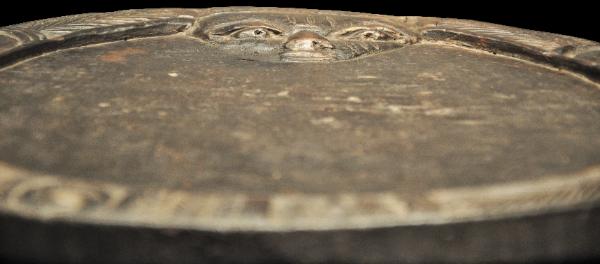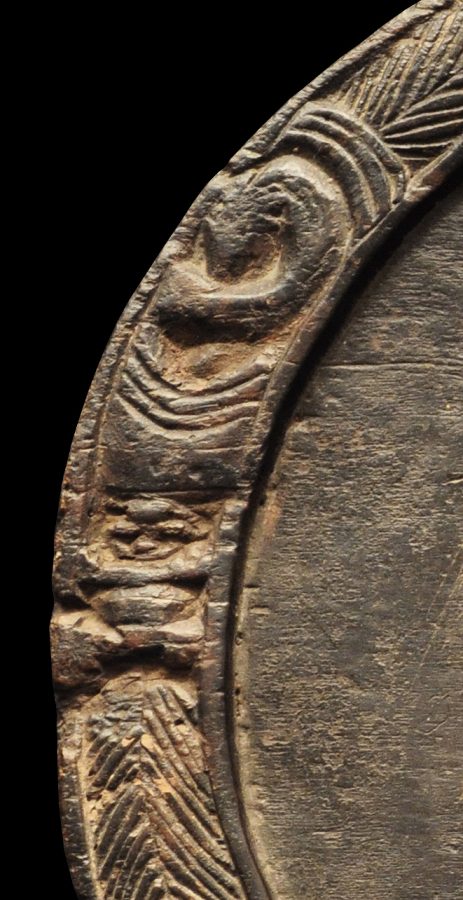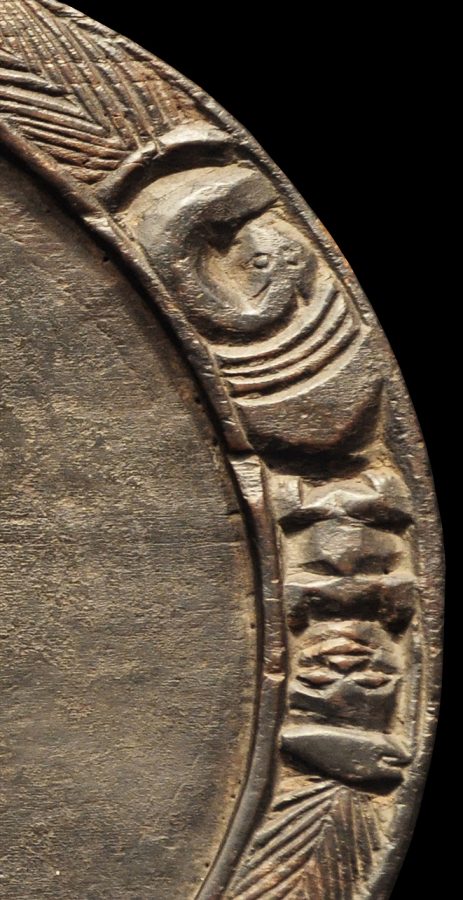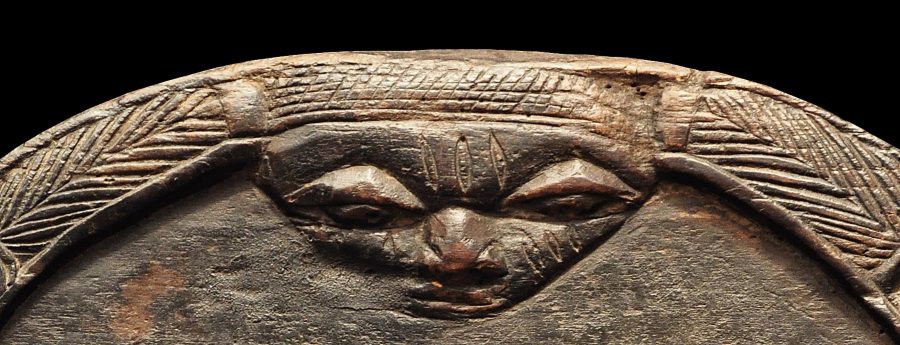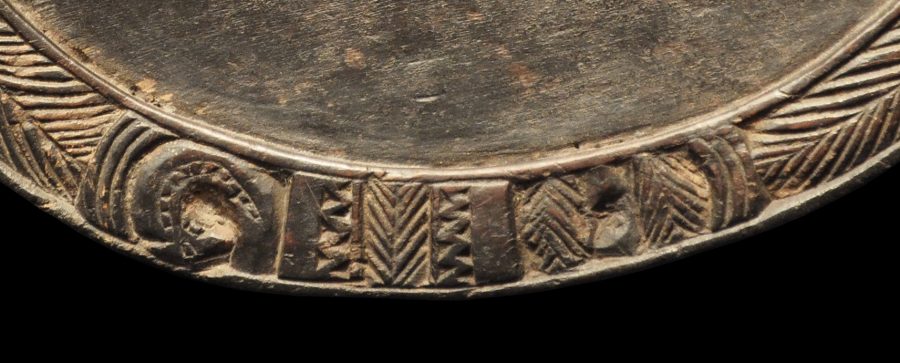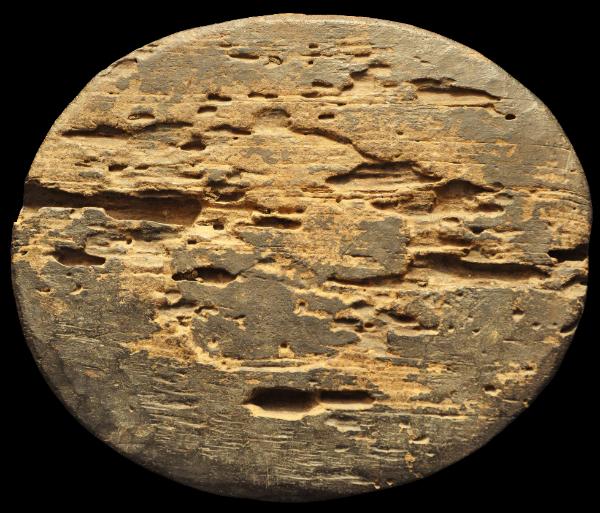This divination board (Opon Ifa) has more signs of age and ritual use than any such board that we have seen. It is oval in shape and carved with a prominent face to the top of the outer rim. The face represents Eshu, the messenger deity who acts as a medium between the human and spirit realms, specifically to Ifa, the god of divination. Its eyes are bulgy, almond-shaped and half-closed. The irises are pierced. The nostrils are flared. Three vertical scars appear on the forehead as well as on each cheek. The lips are unusually fine. Overall, the face has a very serene expression.
The centre of the board is depressed to accommodate the various sacred materials used in the divination process. The edge of the board is decorated with finely incised lines of chevron shape, with alternating mudfish and human motifs. The positioning of the mudfish and human forms gives a sense of flowing movement in a clockwise direction.
The mudfish (egedu) is both a mythical and real creature to the Yoruba people, due to its capability of moving between two realms (water and land). It is a symbol of wealth and power of rulers. Some mudfish also have a dangerous electric charge, which one might equate with the ruler’s power.
This divination board has a dark, deep patina and signs of great use. It has been tapped heavily, which is manifested by copious clear tapping marks across the depressed centre. The back of the board is heavily eroded. Glossy patination is evident to sections of the erosion, further suggesting significant age.
The divination board comes with a custom-made stand.
Divination trays were used to predict events and to seek advice. Orunmila is the spirit of wisdom and divinity of destiny and prophecy in Yoruba mythology. Ifa divination was a means to transcribe Orunmila’s wisdom. Eshu acts as a medium between the human and spirit realms. Eshu delivers knowledge and guidance in times of trouble, regardless of the other deities a person may worship. During the divination ritual, a priest called a Babalawo (‘the father of ancient wisdom’)
would sprinkle pulverised wood or yam flour onto the depressed central area of the divination board and tap rhythmically on it with a tapper (Iroke Ifa) to invoke the presence of Orunmila.
A bowl (Agere Ifa) was used to hold sixteen sacred palm nuts (Ikins), which must have at least 3 “eyes”. During the divination process, the Babalawo would group the palm nuts in one hand, and shift as many as possible to another hand at once. The remaining palm nuts, desirably one or two, were counted and marked. As the divination proceeded, the Babalawo would continue to make single or double marks in the wood powder spread on his divination tray until one of the 256 available odus is created. (An odus is a set of accepted traditional binary patterns or codes that have evolved over thousands of years of observation and prediction. They provide guidance on both the everyday and the spiritual.)
In 2005, UNESCO added the Yoruba divination system to its list of ‘Masterpieces of the Oral and Intangible Heritage of Humanity’.
The Yoruba form one of the largest tribes in west Africa. There are 30 million Yoruba people in West Africa. They are predominant in Nigeria. 21% of the Nigerian population are Yoruba. Most still speak Yoruba language. Today, 60% of the Yoruba are Christian and 30% are Muslim. However, many, especially in rural areas, still practise old Yoruba traditions such as Ifa.
References
Abiodun, R., H. J. Drewal & J. Pemberton III, Yoruba: Art and Aesthetics, The Center for African Art and the Rietberg Museum Zurich, 1991.
Bacquart, J. B., The Tribal Arts of Africa, Thames & Hudson, 1998.
Drewal, H. J. & M. T. Drewal, Gelede: Art and Female Power among the Yoruba, Indiana University Press, 1983.
Fagg, W. and J. Pemberton, J., Yoruba: Sculpture of West Africa, Collins, 1982.
Rowland, A., H.J. Drewal, and J. Pemberton, Yoruba: Art and Aesthetics, Museum Rietberg, Zurich, 1991.


